Are These Domestic Mallards or Wild Ducks?
Updated: Feb. 07, 2024
If you spotted a duck with unique coloring it might be a domestic mallard. See what the birding experts say about domestic ducks and geese.
On This Page
What Does a Domestic Mallard Look Like?
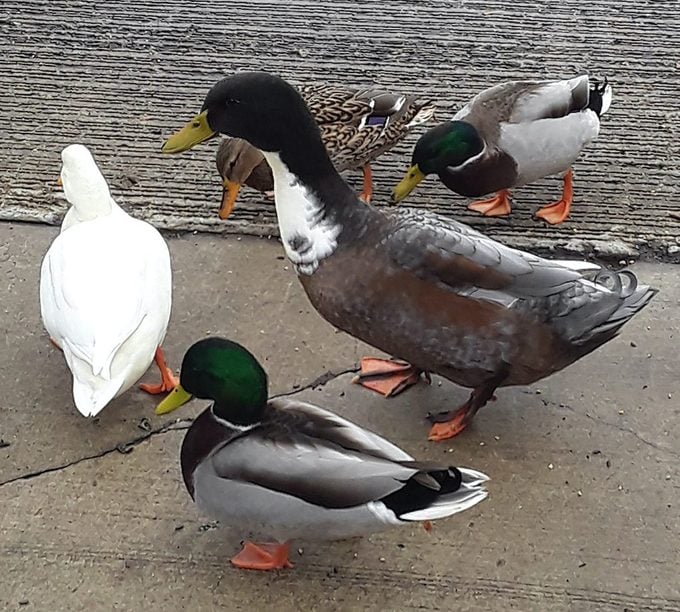
“This large duck hangs out with mallards but looks completely different. What is it?” asks Birds & Blooms reader Todd Gorski of Mishawaka, Indiana.
Birding experts Kenn and Kimberly Kaufman say, “Most domestic ducks are descended from the mallard, first domesticated in the Far East more than 2,500 years ago. Many distinctive forms have been selectively bred for new colors and sizes. These are not separate domestic duck species, just different varieties, much like there are many breeds of dogs. These varieties all interbreed with each other, producing intermediates.
More than 80 mallard varieties have been named. Some are large and dark with a white bib, such as the bird in your photos. Your bird doesn’t seem like an exact match for any named breed, but it’s similar to both Duclair and Blue Swedish ducks.”
What foods can you feed to ducks?
Escaped Domestic Ducks
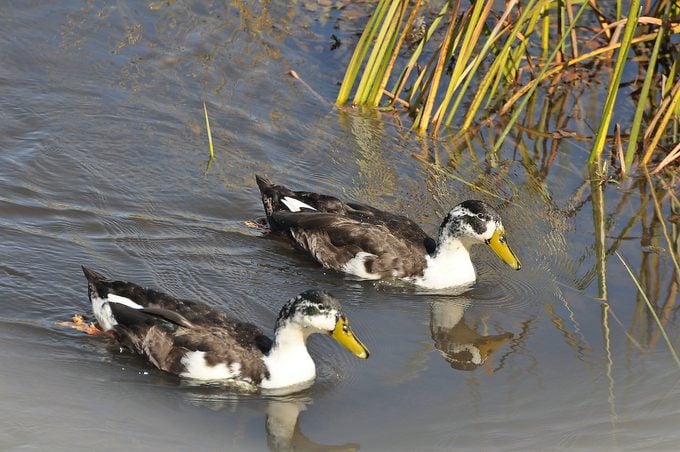
“We saw these ducks (above) while at the Sacramento National Wildlife Refuge Complex last October. What kind are they?” asks Roy and Debbie Pardee of Ukiah, Connecticut.
Kenn and Kimberly say, “The short answer is that these are escaped domestic ducks, but the long answer is more interesting. Most domestic ducks are descended from either mallards or Muscovy ducks, and those in your photo are in the mallard line. Over the last several centuries, people have developed many distinctive breeds of these ducks, ranging from all white to glossy greenish black, and many colors in between.
These two look most similar to a rare breed called the Ancona duck, but they are not completely typical. When domestic ducks escape from captivity, they may wander in the wild for years, causing confusion for bird watchers.”
Meet 20 types of ducks you should know.
Are These White Mallard Ducks Leucistic?
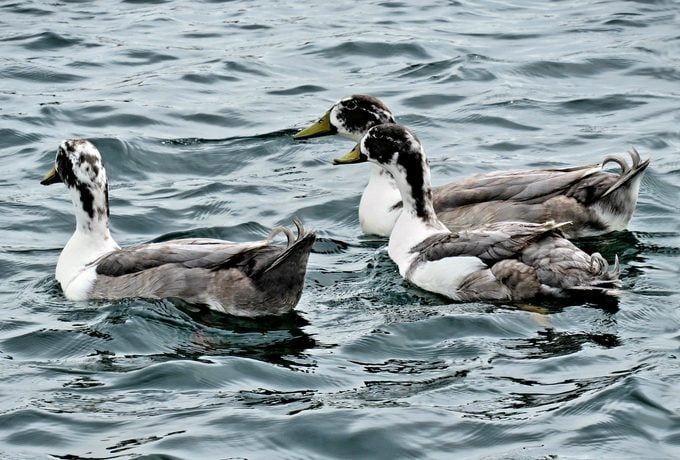
“I saw these ducks while in Gilbert, Arizona. I think they’re leucistic mallards, but my dad thinks they’re a different species. What are they?” asks reader Elsa Papenfuss of Star, Idaho.
Kenn and Kimberly say, “Mallards have been domesticated for more than 2,000 years, and many distinct breeds have been developed during that time. These are not separate species, just varieties, comparable to dog breeds like poodles or beagles. More than 80 varieties of domestic mallards have been recognized and named, and because they can all interbreed with each other, they produce many intermediate forms. The birds in your photo look similar to a couple of types called Blue Swedish and Ancona, although these ducks aren’t quite typical for either.”
Domestic White Crested Duck
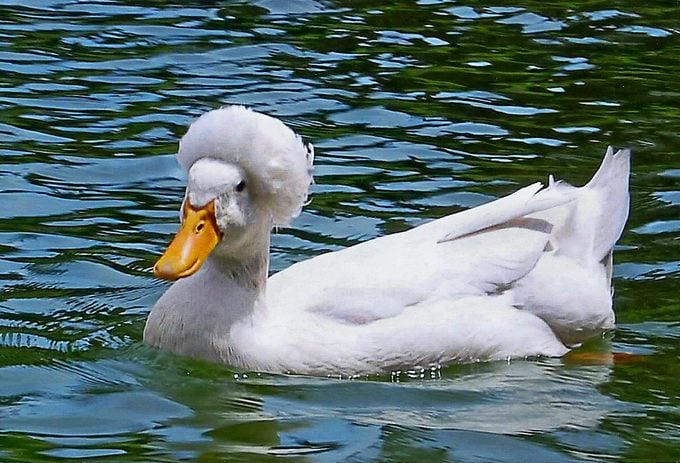
“This photo was taken at a lake in Columbus, Ohio. Can you tell me what kind of duck this is?” asks reader Georgette Ingellis of Bristol, Connecticut.
Kenn and Kimberly say, “Over the centuries, waterfowl breeders have developed many distinctive varieties of domestic ducks, with almost all of them descended from the familiar mallard. This attractive breed is called a white crested duck. It has been a recognized variety for more than 300 years, with ducks of this type seen in Dutch paintings of the 1660s. Like other domestic duck breeds, white cresteds are sometimes seen wandering around in the wild or visiting park lakes.”
Learn how to identify a wood duck.
Domestic Hybrid Canada Goose
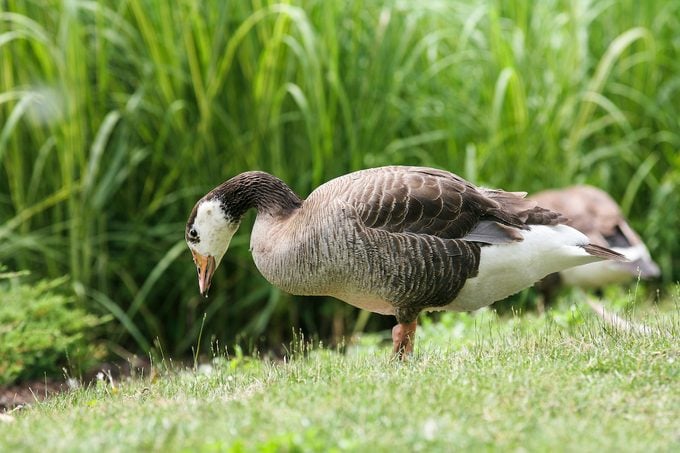
“I saw this goose in a group of Canada geese and noticed that it was different. What kind is it?” asks reader John Yinger of Columbus, Ohio.
Kenn and Kimberly say, “Interesting goose! It looks like a hybrid—a cross between a Canada goose and a domestic greylag goose. This kind of thing happens occasionally, because geese are not always very picky in mating season. Canada geese are often involved in these mixed pairings. The trick is to figure out the identity of the other parent. For the bird in your photo, the overall body color, large pinkish bill and heavy rear end all suggest that a domestic greylag was the other member of the pair.”
Next, learn how to tell the difference between a canvasback vs a redhead duck.
Why Trust Us
For nearly 30 years, Birds & Blooms, a Trusted Media Brand, has been inspiring readers to have a lifelong love of birding, gardening and nature. We are the #1 bird and garden magazine in North America and a trusted online resource for over 15 million outdoor enthusiasts annually. Our library of thousands of informative articles and how-tos has been written by trusted journalists and fact-checked by bird and garden experts for accuracy. In addition to our staff of experienced gardeners and bird-watchers, we hire individuals who have years of education and hands-on experience with birding, bird feeding, gardening, butterflies, bugs and more. Learn more about Birds & Blooms, our field editor program, and our submission guidelines.




















